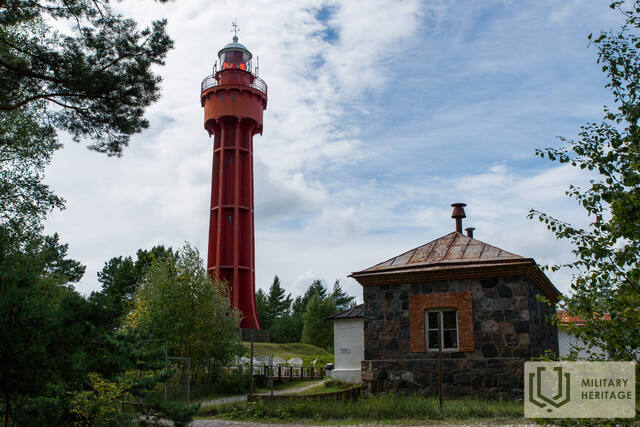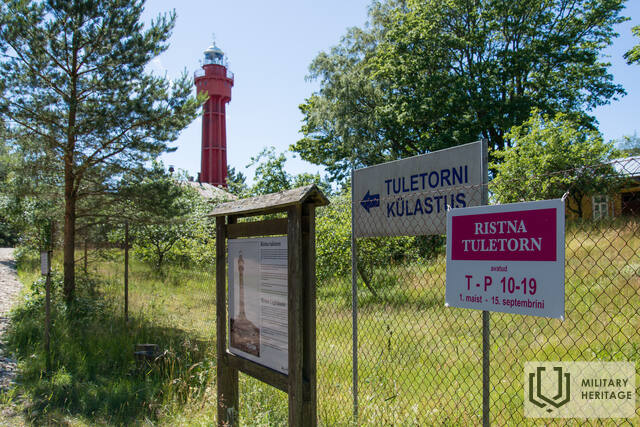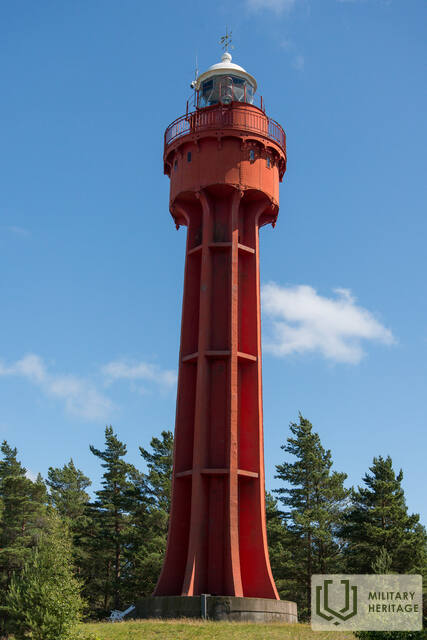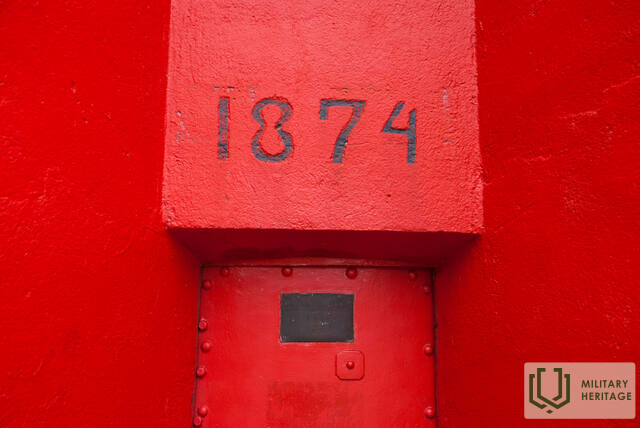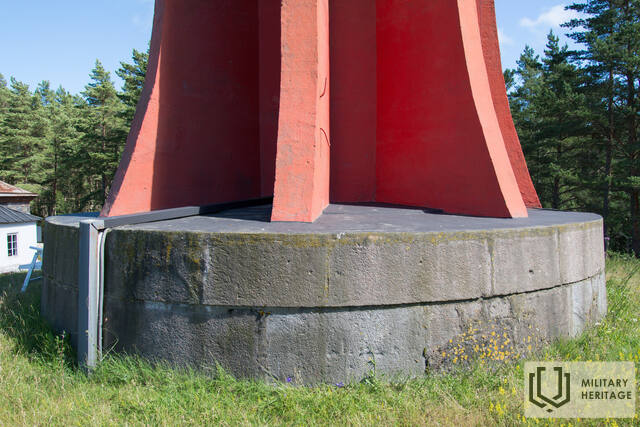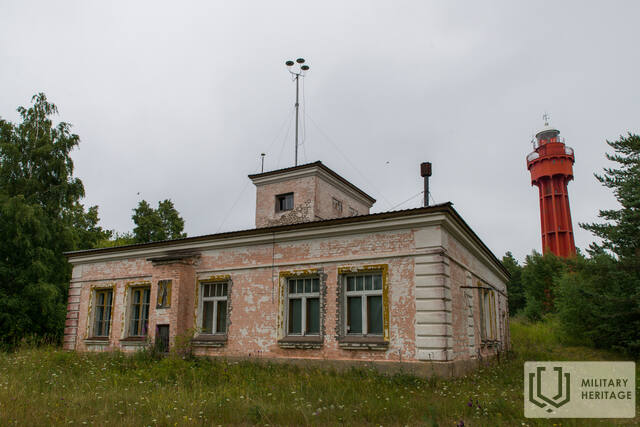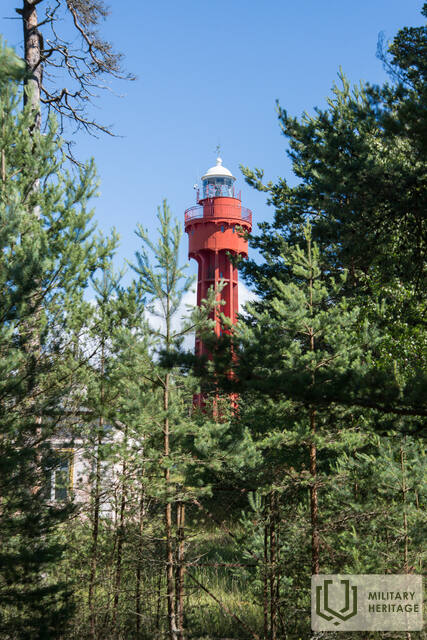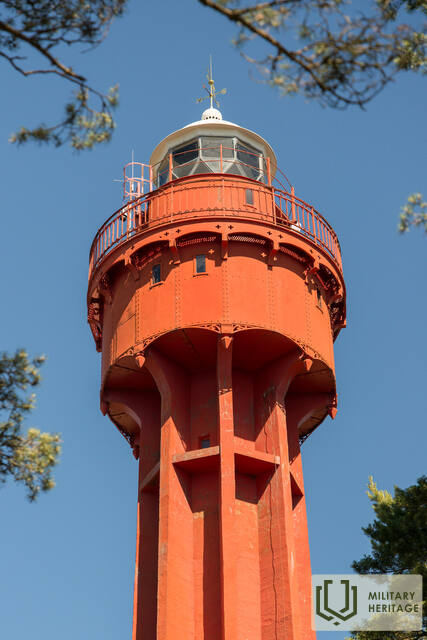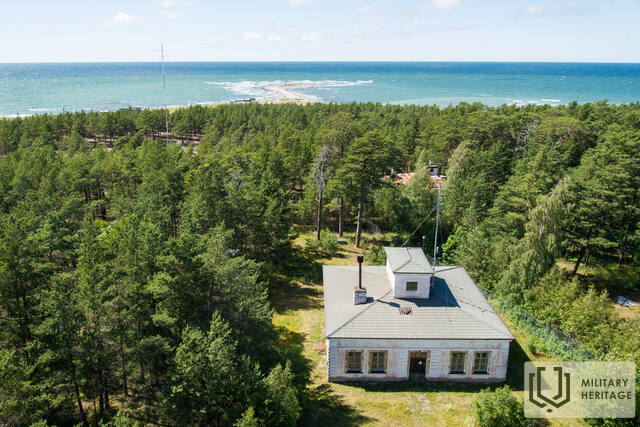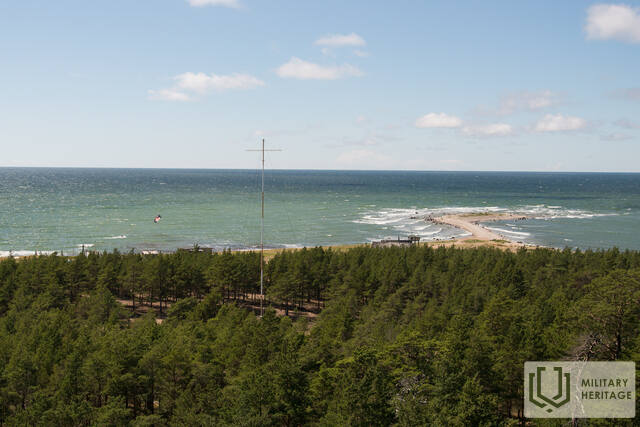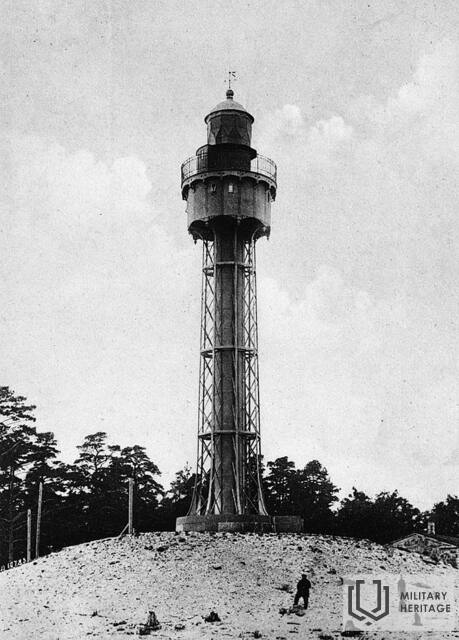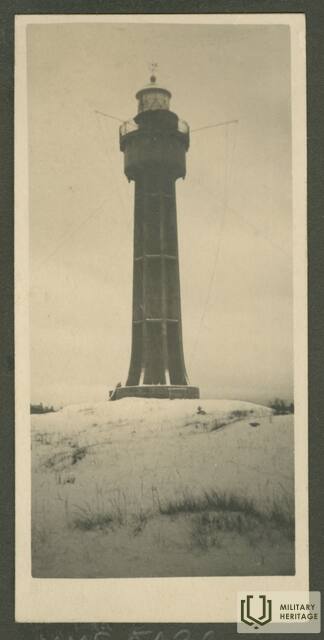Ristna Lighthouse Infrastructure

This 30-metre, cast-iron lighthouse was assembled in 1874 from components manufactured in France. The lighthouse was badly damaged during World War I and was reinforced with a concrete outer structure in 1921.
The lighthouse itself is 29.5 metres high, while its light towers 37 metres above sea level. The light can be seen from 31.5 km away.
The lighthouse was also tasked with warning vessels about the ice conditions in the Baltic Sea, alerting them with a blinking red light if the nautical channels were blocked by ice.
This lighthouse is connected to events of the First World War: On 12 August 1914 at 4 AM the German cruiser Magdeburg fired at the Ristna lighthouse and the communications outpost on Cape Ristna. This marked the arrival of the First World War on Estonian territory. Ristna lighthouse was used for communication between patrolling British and Russian submarines and the naval base in Tallinn. Radio communication was avoided. The submarines surfaced at the agreed-upon location and sent their communication officers to the base by the lighthouse to make contact with Tallinn on the phone to receive further instructions. On the same day the Russian Navy used a fairly rare contraption of that time, a hydrophone, to record any noise generated by ship propellers on Cape Ristna. The coastal outpost and cables were destroyed while the Russians retreated, the remains of the hydrophone are still deep on the sea floor to this day, its location unknown. It is worth mentioning that the fog siren building erected in the early 20th century is one of the few surviving fog siren buildings of Estonian lighthouses.




